The Culinary Institute of America
Episodes
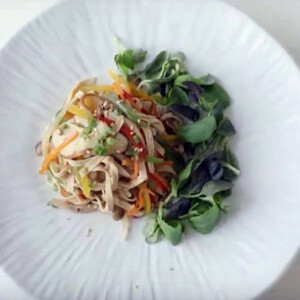
Wednesday Jun 28, 2023
Tofu Noodles Stir-fried with Vegetables
Wednesday Jun 28, 2023
Wednesday Jun 28, 2023
Chef Jeong Min Gi at Pulmuone’s corporate headquarters in Seoul, South Korea makes tofu noodles stir fried with bell peppers, carrots and oyster and shiitake mushrooms. He stir fries the vegetables and tofu in a classic Koran bolgogi sauce. Tofu noodles are a healthy gluten-free alterative to wheat flour noodles.
Watch the full Asian Plant-Forward Kitchen: Korea documentary and find plant-forward recipes at https://www.plantforwardkitchen.org/korea
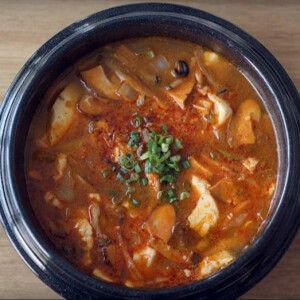
Tuesday Jun 27, 2023
Soft Tofu Soup with Mushrooms: soondubu jjigae
Tuesday Jun 27, 2023
Tuesday Jun 27, 2023
Soon Tofu Soup, or soondubu jjigae, is a popular spicy Korean stew made with soft tofu called soondubu. In Korean, soondubu jjigae translates to “soft tofu stew;” soondubu meaning “soft tofu” and jjigae meaning “stew.” Chef Jeong Min Gi at Pulmuone’s corporate headquarters in Seoul, South Korea shows us how he makes this delicious and healthy comfort food, using oyster and shiitake mushrooms, zucchini, onion, and gochugaru, or Korean chili flakes. The gochugaru gives the dish its heat and beautiful red color. He adds the soft tofu at the end so that it does not break apart.
Watch the full Asian Plant-Forward Kitchen: Korea documentary and find plant-forward recipes at https://www.plantforwardkitchen.org/korea
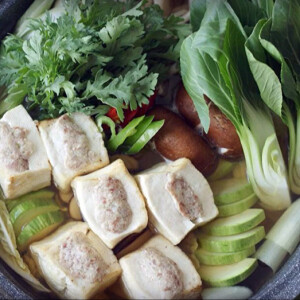
Monday Jun 26, 2023
Hot Pot with Vegetables and Beef-Stuffed Tofu
Monday Jun 26, 2023
Monday Jun 26, 2023
Chef Jeong Min Gi at Pulmuone’s corporate headquarters in Seoul, South Korea shows us how he makes a hot pot full of colorful vegetables, including napa cabbage, bok choy, chrysanthemum greens, shiitake mushrooms, and leeks. He tops the vegetables with cubes of firm crispy-fried tofu stuffed with a mixture of ground beef and aromatics. This hot pot is a healthy and delicious comfort food that with a beautiful presentation.
Watch the full Asian Plant-Forward Kitchen: Korea documentary and find plant-forward recipes at https://www.plantforwardkitchen.org/korea
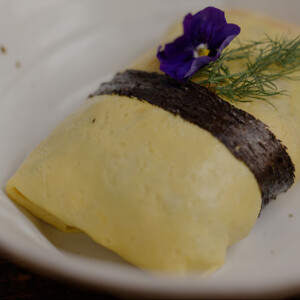
Sunday Jun 25, 2023
Chef Song Jeong Eun’s Organic Fare at Flower Blossom on the Rice
Sunday Jun 25, 2023
Sunday Jun 25, 2023
Song Jeong Eun is chef and owner of the eco-friendly restaurant, Flower Blossom on the Rice, located in Seoul, South Korea’s Insadong district. All ingredients used are organic and vegetarian, and focus on regional Korean products. The signature dish at this restaurant is the Bojagi Bibimbap, rice topped with five different sautéed vegetables, wrapped in an omelet, and served like a little gift with a seaweed ribbon and flower on top. The restaurant has a Michelin Bib Gourmand recommendation.
Watch the full Asian Plant-Forward Kitchen: Korea documentary and find plant-forward recipes at https://www.plantforwardkitchen.org/korea
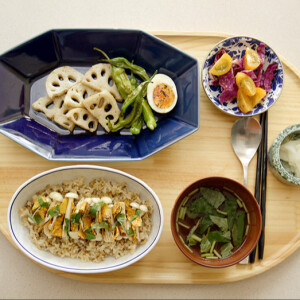
Saturday Jun 24, 2023
Grilled Lotus Root and Shishito Peppers with Chef Jinah Chang at Base is Nice
Saturday Jun 24, 2023
Saturday Jun 24, 2023
Jinah Chang is chef and owner of Base is Nice Restaurant in South Korea, where vegetables are the star of the menu. She prepares grilled lotus root and shishito peppers with sesame sauce and two types of rice.
Watch the full Asian Plant-Forward Kitchen: Korea documentary and find plant-forward recipes at https://www.plantforwardkitchen.org/korea
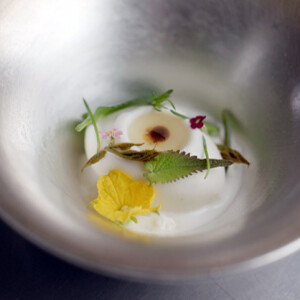
Friday Jun 23, 2023
Bibimbap-inspired Dessert by Chef Kang Mingoo of Mingles
Friday Jun 23, 2023
Friday Jun 23, 2023
Kang MinGoo is chef and owner of the two Michelin-star restaurant Mingles in Seoul, South Korea. Mingles aims to reinterpret Korean cuisine by serving creative dishes with seasonal local ingredients. In this video, Chef MinGoo prepares a dessert inspired by bibimbap. He makes ice cream made from glutinous rice pudding, garnished with fresh herbs, sesame oil and soy sauce.
Watch the full Asian Plant-Forward Kitchen: Korea documentary and find plant-forward recipes at https://www.plantforwardkitchen.org/korea
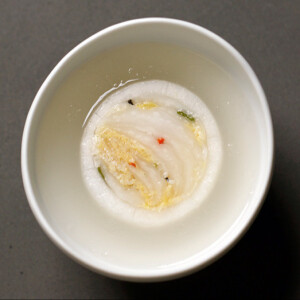
Thursday Jun 22, 2023
Chef Kim Byung-jin Makes White Pear Kimchi
Thursday Jun 22, 2023
Thursday Jun 22, 2023
Kim Byung-jin is the Chief Executive Chef of Gaon restaurant in Seoul, South Korea. In this video, he shows us how he makes white kimchi stuffed inside an Asian pear.
Watch the full Asian Plant-Forward Kitchen: Korea documentary and find plant-forward recipes at https://www.plantforwardkitchen.org/korea
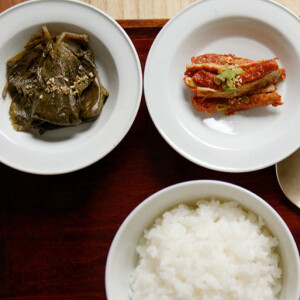
Wednesday Jun 21, 2023
Korean Pickles with Chef Cho Heesuk
Wednesday Jun 21, 2023
Wednesday Jun 21, 2023
Chef Cho Heesuk from the Michelin-starred restaurant Hansikgonggan, located in Seoul, shows us a number of traditional Korean pickles. She explains the three foundational techniques for fermenting vegetables in Korea: soy sauce, soy bean paste, and gochujang.
Known as the “Godmother of Korean cuisine,” Chef Che Hee Sook was named Best Female Chef as part of Asia’s 50 Best Restaurants of 2020. She is known for bringing traditional Korean cuisine onto the fine dining world stage. Watch the full Asian Plant-Forward Kitchen: Korea documentary and find plant-forward recipes at https://www.plantforwardkitchen.org/korea